Do you love the left lane?
When you head out on the open road, do you automatically steer toward the left lane because that’s traditionally where “faster” drivers are known to go? And while there’s nothing wrong with using the left lane as it’s intended, people who drive slowly in that lane could find themselves in trouble with the law.
Much of the current misunderstanding over the left lane stems from the 55 mph national speed limit that was enacted in 1974, according to the National Motorists Association (NMA), a grassroots drivers’ alliance that lobbies for traffic regulations and safety issues. Before this, passing on the left was an unwritten rule of the road, but after the speed limit was enacted, drivers believed that if they were maintaining the posted speed limit then they could chill anywhere. “Because the speed limit was too low, drivers trying to pass weren’t allowed to and it caused a lot of problems, and it still does,” says Shelia Dunn, Communications Director of the NMA.
Reserving the left lane only for passing other cars—known as “lane courtesy”—reaps surprising benefits, however. Here’s why you should reserve your left-lane use for passing only.
You’ll Avoid Tickets And Fines
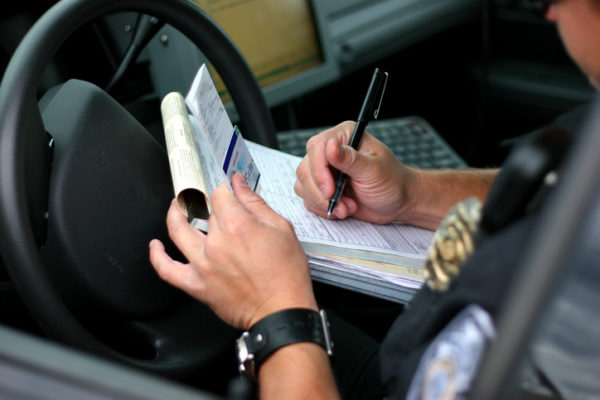 People have different interpretations of how to drive in the left lane, but staying there when you’re not passing isn’t allowed in most states, despite what some drivers might think. Blame the confusion on the lack of a nationwide law. In 29 states, there are laws that any car moving slower than the surrounding traffic should be in the right lane, while other states are stricter and designate the left lane only for turning or passing. In Georgia, it’s actually a misdemeanor to move slower in the left lane than surrounding traffic. This year, Tennessee cracked down and now has established a $50 fine for slow left-lane drivers.
People have different interpretations of how to drive in the left lane, but staying there when you’re not passing isn’t allowed in most states, despite what some drivers might think. Blame the confusion on the lack of a nationwide law. In 29 states, there are laws that any car moving slower than the surrounding traffic should be in the right lane, while other states are stricter and designate the left lane only for turning or passing. In Georgia, it’s actually a misdemeanor to move slower in the left lane than surrounding traffic. This year, Tennessee cracked down and now has established a $50 fine for slow left-lane drivers.
It’s Safer
Beyond avoiding fines (always a plus!), abiding by lane courtesy makes the roads safer for everyone, as faster drivers have a quick and easy way to get around slower drivers. “You’re less likely to get into an accident because traffic is always flowing and more consistent,” says Dunn.
You’ll Save On Gas
Following the letter of the law can save you a few bucks, too. Maintaining your speed and sticking to the right can get you better gas mileage. You’re also doing planet Earth a solid. Less weaving in and out of lanes is more fuel-efficient and better for the environment, so even if you forgot to recycle last week, you can still be a tad proud of yourself if you stick to the right.
You’ll Stress Less
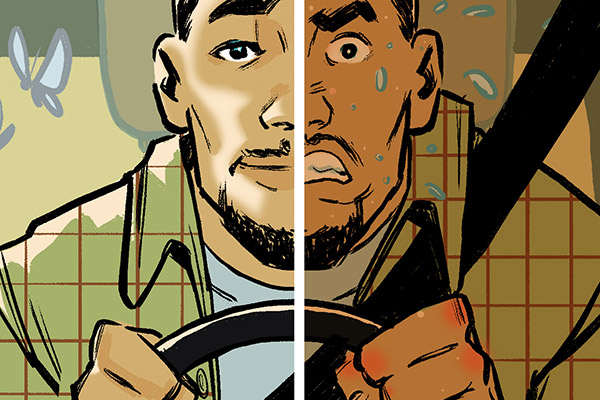 Trying to zip around cars doesn’t significantly improve your commute time, either. “If you remain at a consistent speed limit and only drive to the left if you need to, you’re going to ultimately get to your destination faster,” says Dunn. Plus, lane courtesy might just be the quickest cure for road rage. “If you’re weaving in and out and cutting people off, you may cause road rage in others, and that’s what we really need to stop,” says Dunn.
Trying to zip around cars doesn’t significantly improve your commute time, either. “If you remain at a consistent speed limit and only drive to the left if you need to, you’re going to ultimately get to your destination faster,” says Dunn. Plus, lane courtesy might just be the quickest cure for road rage. “If you’re weaving in and out and cutting people off, you may cause road rage in others, and that’s what we really need to stop,” says Dunn.
Of course lane courtesy is easier said than done, especially in states with heavily trafficked motorways. But you don’t have to give up entirely. “Don’t just park yourself in one of the middle lanes,” recommends Dunn. “You should really be cognizant of trucks and what everyone around you is doing, and try to drive right as much as possible.” But staying in the right lane doesn’t mean you can zone out, either: Remember to be aware of and make room for merging vehicles.
In the end, lane courtesy actually helps all drivers treat one another as equals on the road—and makes the highways and freeways a safer space for everyone.
Before you take off to your next destination, get a fast, free auto insurance quote from GEICO to see how much you could save.
Next: The rules of the road aren’t always cut and dry, so take our “Are You a Good Driver?” quiz to find out how you compare with your fellow motorists.
By Kara Cutruzzula




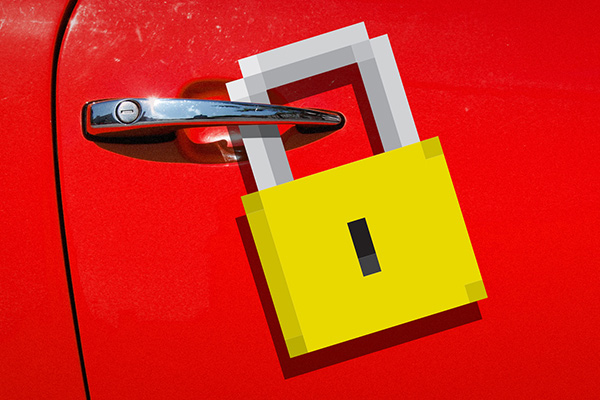

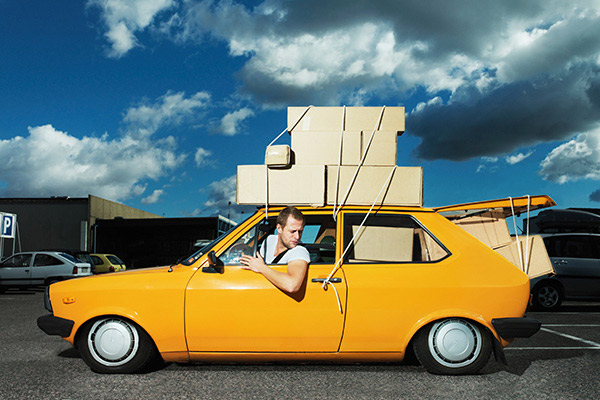


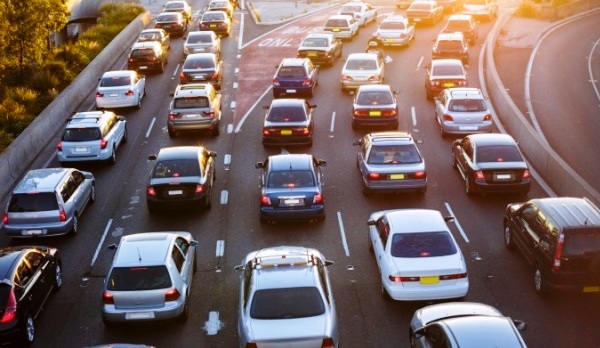
Jim Campbell says,
A couple of other observations too: large trucks are extremely guilty of obstructing traffic, sometimes taking as much as 10 miles to pass another going less a a mile an hour slower. They also are often required to use the rightmost lane(s); many of which are being damaged significantly because of poor construction. Who wants to drive their car in a pothole ridden lane? Change the laws & the taxes to make people be aware and force those who are damaging the roadways to maintain them in a proportional manner. AND, force cell phone manufacturers to alter their software to disable texting if the phone is moving more than 10 MPH. The technology is available. Passengers can get over the inconvenience; they should be helping the driver maintain situational awareness anyway.
Jim Campbell says,
I have to disagree somewhat and here’s why. Many interstate highways, especially in large cities, have right lanes that suddenly turn into exit only lanes. At the most inopportune time you can find yourself trying to move to the left if you’re not exiting.
Situational awareness is the key to safe driving; not necessarily having by the rules established by those who only drive in their locale (as in near their state capitol or home).
Safe driver says,
Why is everyone incoherently ranting about their random traffic gripes?
The simple point of this article is to point out a simple fact:
If the highway isn’t at full capacity, don’t ride in the left lane. Stay right so faster traffic can pass safely.
That lunatic doing 50% higher than the posted limit? He’s going to find a way to do it, even if you’re determined to play amateur police officer and try to block him. When he starts weaving on the highway, swerving between lanes and taking risks that could cause fatal accidents, you’re partially at blame for not doing your part in just letting them go IN A STRAIGHT LINE.
Practice “zen driving”. Hang out in the right lane and stay within a few miles over the limit. Let the speeders and swervers use the left and middle lanes.
Kathy Fleming says,
If you think about it, driving on a two lane road is the same as a four lane road- if you’re on a 2-lane you drive in the right lane and pass in the left. Only difference is on-coming traffic. I watched a county sheriff tail gate a driver who was going the speed limit in the left lane. Guy had no clue. Blue lights finally got him to move over a lane, the cop went on down the road and that guy moved back into the left lane.
Bill Croke says,
Good article, but I’ve been grousing about this for years. In fact, i told my wife I was going to create a placard to hold up as I passed drivers dawdling along in the left lane (on their right) . The placard would read: KRETP! They could then spend the rest of their trip trying to figure out what it meant (KEEP RIGHT EXCEPT TO PASS!)
Linn Kriner says,
Excellent articles and so very true, everyone is for them selves on the road today, and there lays the problem. I spent 4.2 million miles in a semi and have traveled approx. another 100,000 miles site seeing since I retired and what I see on the highways today is extremely scaring and sad. States used to put signs on the highways saying to keep to the right except to pass but no more. Really would help to see them again MAYBE.
Kirk Imoto says,
I agree with the spirit of this article wholeheartedly. I drive a hybrid electric vehicle and am very happy to use the right lane and travel at posted speed limits. In addition to safety, which is the number one concern, my vehicle’s information display gives me real-time feedback about my driving behavior with regard to efficiency. I have discovered that I have a “Type B driving personality” and choose to drive defensively.
Mark says,
Drivers use the left lane as a “I want to go as fast as I want and you better get out of the way,” lane. No where on the freeway is it OK to speed; the left lane is not an exception to this rule. Also, the freeways are WAY TOO BUSY to accommodate the luxury of a passing only lane. If such a rule were enforced, the already clogged freeways would get worse. Additionally, in my State, passing is not defined, so the dictionary definition would apply ( “overtaking another vehicle”). I can tell you that I am often “overtaking another vehicle” when I might be as much as 200 feet from the car. That would still be “passing.” It’s an unworkable law and needs to be repealed. Also, the left lane is one of the safest on the freeway. The right lane would be as well, but slower drivers drive there. For those of us who speed (around 7-10 miles per hour over the limit), the safest lane is the left. The middle lane is much more dangerous, because the most dangerous thing you do the freeway is to pass other cars.
Kelly Rummings says,
As an instructor for the NUS defensive driving course also known as the point and insurance reunction class, these posts are great!
Bob says,
Yea, I’m one of those left-lane travelers and I always maintain the speed of the car to the front of me. My pet peeve are people who tailgate even when they know there’s someone in front of me. Also the guys who tailgate when I’m going 10 to 15 miles over the speed limit on a lightly traveled road, again keeping up with traffic, then I pull over to the right to let the tailgater go by and instead of passing, actually slows down. Apparently he thinks if he tailgates a speedier he’ll be immune to any speeding tickets that might arise. I find these characters extremely annoying and disruptive to an otherwise relaxing trip.
amy braunstein says,
please talk about this more often. including tailgating and over use of breaks. drivers are to distracted as well.
i travel interstate 684 in NY everyday including the saw mill pkwy i must tell you the skills being performed out here are way under par.
John W. says,
We need more educational infos like these from time to time.
Sharing & courtesy on the road are very important.
Enforcement of the law will also help.
Unfortunately too many selfish drivers on the road.
Nanpenn says,
I prefer the left lane because there are no trucks and only one side to watch for crazy drivers, you know, the ones texting, putting on makeup, or chatting with kids in the back seat. I will go 7-8 miles over the limit if traffic allows. I do move over if some “idiot” feels the need to go 80 in a 65 zone. That is if they give me the option and don’t scream around on right. Maybe Geico should discuss the benefits and safety aspects of drivers NOT using the freeways (regardless of lane) as racetracks. Also, lets not forget about the angry drivers that cause accidents!!!!!
Humberto E. Granado says,
Thanks Geico, my insurance cover since the Nineties. The rule is very simple, you drive right, and you pass left. However, in a emergency , you have to use whatever is at that moment available to avoid collision with another vehicle or obstacle. Thank you for the opportunity to submit my thoughts on this matter.
Gretchen says,
I wish I could get a sticker for my front bumper that says “Lane Courtesy = Keep Right Except to Pass” printed as a mirror image so the person in front of me could read it.
Mandatory “keep right” laws should be paired with “no passing on the right laws.” It is really dangerous if a vehicle is passing left around a slower middle-lane driver and another driver decides to pass the same car on the right–and they are both intending to return to the middle lane!
MIT has a useful online chart that gives a state-by-state breakdown of “keep right” laws, and self-righteous left-lane hogs should note that the chart begins by saying: “Most states follow the Uniform Vehicle Code and require drivers to keep right if they are going slower than the normal speed of traffic (regardless of the speed limit). These are listed as ‘slower.'” The hazard you are creating is serious, and avoiding accidents takes priority over you deputizing yourself to force someone to go 65 mph instead of 68 mph.